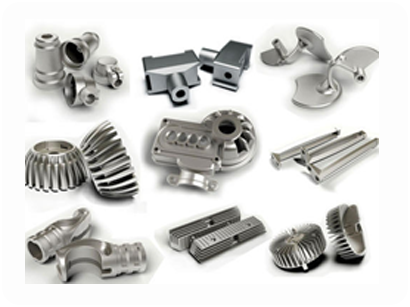Die Casting Part
Die-casting parts are widely used in the automobile industry for their lightweight, beautiful appearance, and corrosion resistance.


Advantage and disadvantage of die casting
As you know, die casting is a metal manufacturing process in which molten metal is forced under high pressure into mold tooling cavities. And easily to obtain the desired metal shape, nowadays, it is a widely used in automotive, lighting, industrial, and households. Here below let’s talk about something on die casting’s advantage and disadvantage. As well the comparison of other manufacturing process.
Advantages of die casting
Easy for mass production
Since die casting is made from die casting mold, they can be obtained within specified tolerance and shapes. Little or no machining is required and thousands of identical castings can be produced before additional tooling is required. So it’s quiet easy to put on mass production.
Dimensional accuracy and stability
Die casting produces parts that are durable and dimensionally stable, while maintaining close tolerances. They are also heat resistant.
Strength and weight
Die cast parts are stronger than plastic injection moldings having the same dimensions. Thin wall castings are stronger and lighter than those possible with other casting methods. Plus, because die castings do not consist of separate parts welded or fastened together, the strength is that of the alloy rather than the joining process.
Disadvantages of die casting
- All metals and alloys can not be achieved.
- The cost of machines, dies and other equipment used is high.
- It’s not cheap to start with small quantity production
- Special precautions are necessary for evacuation of air from die cavity, otherwise cause porosity.
- It’s impossible to get a die casting prototype when product development process.
Comparisons with other products
Plastics injection moldings
Compared with plastic injection moldings, die castings are stronger, stiffer, more stable dimensionally, more heat resistant, and are far superior to plastics on a properties/cost basis. Die castings have a high degree of permanence under load when compared to plastics, and are completely resistant to ultra-violet rays, weathering, and stress-cracking in the presence of various reagents. Manufacturing cycles for producing die castings are much faster than for plastic injection moldings. Plastics, however, may be cheaper on a unit volume basis, may have color inherent properties which tend to eliminate finishing, are temperature sensitive, and are good electrical insulators.
Sand castings
Compared with sand castings, die castings require much less machining; can be made with thinner walls; can have all or nearly all holes cored to size; can be held within much closer dimensional limits; are produced more rapidly in dies which make thousands of die castings without replacement; do not require new cores for each casting; are easily provided with inserts die cast in place; have smoother surfaces and involve much less labor cost per casting. Sand castings, on the other hand, can be made from ferrous metals and from many non-ferrous alloys not suitable for die casting. maximum size can be greater; tooling cost is often less and small quantities can be produced more economically.
Forgings
Compared with forgings, die castings can be made more complex in shape and have shapes not forgeable; can have thinner sections; can be held to closer dimensions and have coring not feasible in forgings. Forgings, however, are denser and stronger than die castings; have properties of wrought alloys; can be produced in ferrous and other metals, and in sizes not suitable for die castings.
Stamping
Compared with stamping, one die casting can often replace several parts. Die castings frequently require fewer assembly operations; can be held within closer dimensional limits; on the other hand, stamping have properties of wrought metals; can be made in steel and in alloys not suitable for die casting, and in their simpler forms, are produced more rapidly, and may weigh less than die castings
